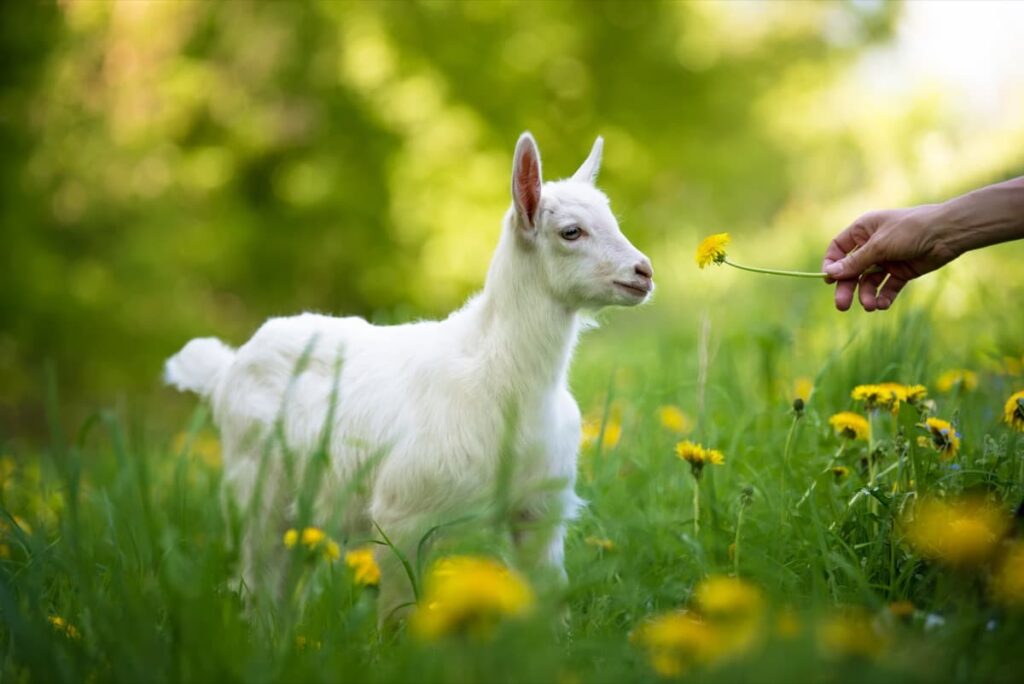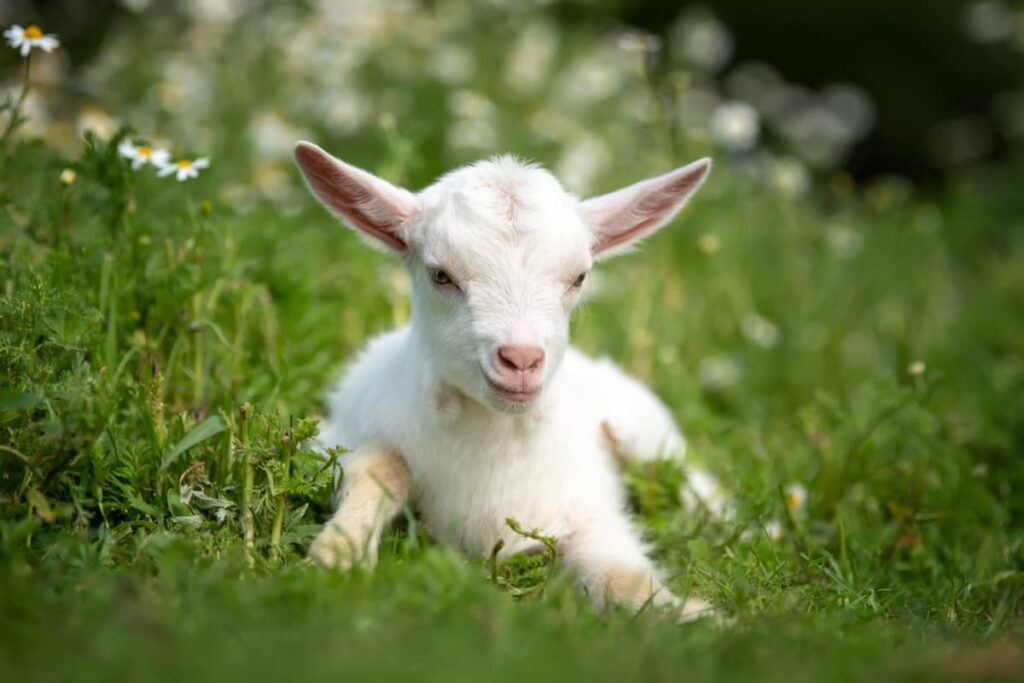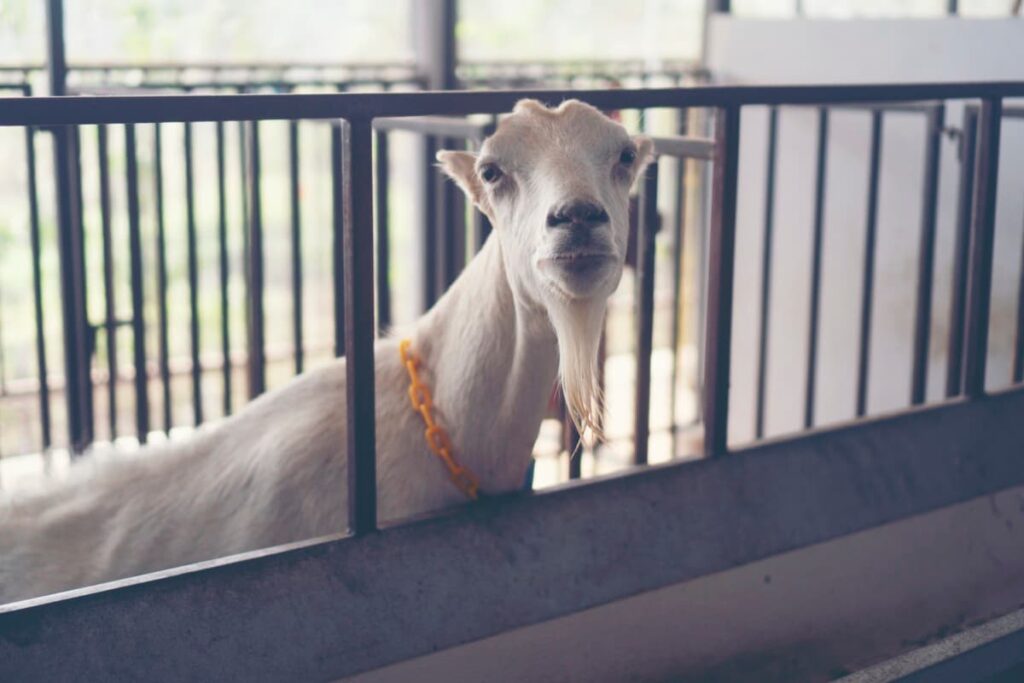The Changthangi goat, also known as the Changpa, is a unique cashmere goat native to the high plateaus of Ladakh in northern India. They are primarily raised for their fine-quality cashmere wool production.

Changthangi Goat Farming
Characteristics of the Changthangi Goats
- The Changthangi goat is a unique breed of cashmere goat that thrives in the harsh, high-altitude environment of Ladakh. They have a distinctive appearance with their straight horns and long, woolly coat.
- The most important characteristic of the Changthangi goat is its ability to adapt to extreme weather conditions. These goats can withstand temperatures as low as -30°C and still produce high-quality wool. Their thick coat keeps them warm and provides excellent insulation against heat loss.
- Another important characteristic of this breed is its docile nature. Changthangi goats are known for being calm and easy to handle, making them ideal for farming. They also have a good appetite and require minimal maintenance compared to other livestock animals. The wool these goats produce is one of the finest in the world.
- The Changthangi goat possesses several unique characteristics that make it the best option for farmers looking for resilient livestock animals that produce valuable products like meat and cashmere wool without excessive care or resources.
- The Changthangi goat is a unique breed with a 49-52 cm height. This small stature makes them well-suited for grazing in the high altitudes of Ladakh, where they are native.
- Their skin color ranges from white to light brown, which helps them blend seamlessly with their surroundings. Additionally, this natural camouflage protects them from predators such as wolves and snow leopards.
Changthangi Goat Raising Purpose
The Changthangi goat is a valuable breed mostly known for its cashmere wool production. The fine quality of their wool, also known as pashmina, makes it one of the most sought-after products in the high-end fashion industries. The goats produce this wool in winter, growing a thick undercoat to protect themselves from freezing temperatures. Changthangi goats are also suitable for meat production due to their adaptability to extreme weather conditions and rugged terrain.
These hardy animals can survive on very little food and water compared to other breeds, making them ideal for farming in remote areas. In addition to their practical uses, raising Changthangi goats can provide an opportunity for eco-friendly livelihoods through sustainable breeding practices that preserve biodiversity while generating income for local communities. The versatility of Changthangi goats makes them a valuable asset in various economic and cultural aspects. Raising these goats on their farms can earn income from selling wool and profit by selling them as livestock.
Tips for Raising Changthangi Goats
- Choose healthy animals from a reputable breeder or seller. Look for well-built goats with clear eyes, shiny coats, and good body condition scores (BCS). The BCS indicates the animal’s overall health and nutritional status.
- Give your goats enough space to move freely in their shelter or pen. Ensure they can access clean water and provide high-quality feed such as alfalfa hay or grass.
- Maintaining hygiene by cleaning the goat pens regularly and managing manure effectively is also essential. This helps prevent diseases such as foot rot, common in goats living in dirty environments.
- Changthangi goats require regular health check-ups from a licensed veterinarian who can diagnose any underlying health issues early on. Vaccinate them against common diseases like pneumonia and tetanus.
In case you missed it: Surviving the Heat: The Impact of Climate Change on Goat Farming

How to Farm Changthangi Goats?
- To successfully farm Changthangi goats, the main step in farming these goats involves providing them with adequate shelter. This can be achieved by constructing a sturdy shed that protects from extreme weather conditions.
- The next step is to ensure that the goat’s diet consists of high-quality forage such as hay and pasture grasses. In addition, farmers should provide their goats with clean and fresh water at all times.
- Maintaining hygiene within the farm by regularly cleaning the shelter and removing any manure or waste materials is also important. Regular health checks are crucial in identifying any potential health issues early on and addressing them promptly.
- Furthermore, farmers should carefully monitor their breeding programs to ensure healthy offspring. Proper breeding practices involve selecting only healthy animals for mating while avoiding close interbreeding, which can result in genetic defects.
- Successful Changthangi goat farming requires good management practices, including proper nutrition, housing, hygiene maintenance, regular health checks, and careful breeding programs.
Feeding Tips for Successful Changthangi Goat Farming
- Feeding plays a critical role in the growth and development of Changthangi goats. A balanced diet with sufficient protein, vitamins, minerals, and roughage must be provided regularly. Feeding should be done twice daily with fresh grass or hay supplemented by commercial feed.
- Changthangi goats require adequate care to maintain good health throughout their lives. Regular veterinary check-ups, including vaccination against common diseases, are necessary, along with deworming schedules.
- The main step to ensuring your goats get adequate nutrition is providing them with good-quality hay or forage. This should make up most of their diet, supplemented by grains such as corn, barley, or oats. It’s important not to overfeed your goats as they tend to gain weight quickly, leading to health problems.
- Changthangi goats also need access to clean water at all times. Ensure you regularly provide fresh water and keep it free from contaminants like algae or bacteria. Consult with a veterinarian about the specific nutritional needs of Changthangi goats before adding supplements.
Changthangi Goat Weight
The Changthangi goat is a medium-sized breed, with the males weighing an average of 20.37 kg and females weighing around 19.75 kg. However, this weight can vary depending on various factors such as age, diet, genetics, and more.
Health Care Management for Changthangi Goats
- Maintaining the health of Changthangi goats is essential for their well-being and productivity. Regular check-ups by a veterinarian are necessary to ensure that they remain healthy. Proper nutrition, including a balanced diet with sufficient protein, minerals, vitamins, and water supply, is essential.
- Like other livestock animals, Changthangi goats also need protection from parasites like ticks and worms. Please keep them in clean surroundings and use veterinary-approved treatments to keep these pests at bay.
- Regular vaccinations protect against common diseases such as foot-and-mouth disease or brucellosis. It’s crucial to follow recommended vaccination schedules.
- Raising Changthangi goats can be profitable if done correctly. Following proper farming practices like good nutrition, regular health checks, and maintaining cleanliness will help you raise healthy goats, producing better quality meat and cashmere wool.
In case you missed it: Best Practices for Disease Prevention and Management in Goats: Strategies for Maintaining a Healthy Herd

Conclusion
Changthangi goat farming is a lucrative business opportunity for livestock farmers. These hardy goats can survive extreme weather conditions, making them ideal for rearing in mountainous areas.
- Goat Milking Practices and Equipment: A Beginner’s Guide
- Goat Farming for Fiber: Producing Mohair and Cashmere
- Maximizing Goat Milk Production: Tips for Dairy Goat Farmers
- Goat Farming as a Family Business: Strategies for Success
- Profitable Kenya Goat Breeds for Commercial Dairy and Meat Business
- Unlock the Secrets of Oberhasli Goat: Discover Raising and Management Practices
- Ultimate Guide to Myotonic Goats: Explore Profile to Raising
- Unlock the Secrets of Rove Goat: Discover Management Practices
- Ultimate Guide to Malwa Goat: Explore from Origin to Management Practices